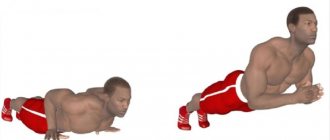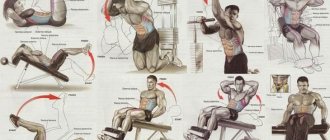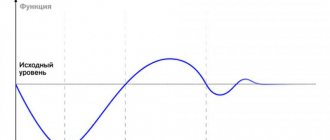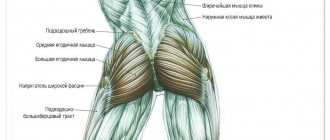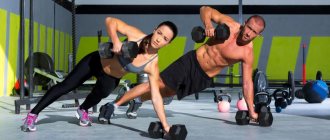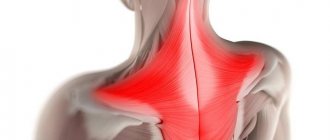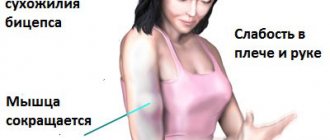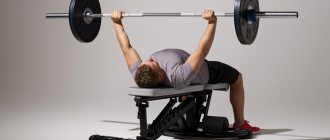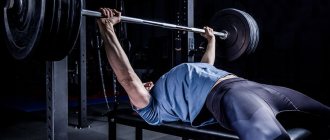The lion's share of men, sooner or later, is faced with a situation where they need to enter into conflicts on the street, in institutions and any other places. It is at such moments that the combat skills that a person possesses come in very handy. But, unfortunately, not everyone has them.
In order not to become a victim of circumstances, it is worth figuring out whether it is possible on your own, that is, at home, or with the help of trainers, to hone your fighting skills and how to make your arms and legs an effective weapon that will help protect not only yourself, but also your loved ones in a critical situation .
How to hit correctly?
At first glance, the simple process of impact is actually a rather complex combination of a number of interrelated factors in which almost all parts of the body are involved. Let's consider them separately.
Rack
First, it’s worth understanding what stands there are for working with your hands and feet:
- Left-handed (for right-handers);
- Right-handed (for left-handers);
- Frontal.
It should be noted that in boxing there are more than 10 types of stances, which take into account the transfer of body weight to any of the legs, the position of the arms, head and body. But first, it’s worth taking into account only three main ones. As for kicks, the emphasis here is on the correct transfer of body weight, turning the pelvis along the trajectory of the leg and preparing the kick itself.
Basics of correct left-handed stance (for right-handers):
- Feet are placed shoulder-width apart;
- The right foot is slightly on the toe (it is at the back), and the left foot should be placed on the entire surface of the foot and turned slightly inward to ensure stability (the left foot will be the “front”);
- The right hand is placed so that the elbow is at the level of the liver, and the fist is at the lower part of the jaw. The left one, in turn, is brought forward a little, the elbow is below the heart, and the hand is turned so that the palm is more turned towards the enemy;
- You should not raise your arms too high, as well as your shoulders themselves - in this case, the deltoid muscles will always be tense, which will ultimately lead to very rapid fatigue, and on top of everything else, it is extremely inconvenient to strike from such a position, because the trajectory of the natural movement of the joints is obviously disrupted ;
- The chin is lowered to such a level that you can protect yourself from a potential blow not only with the forearm, but also with the shoulder itself;
- The opponent will end up between the left and right hands (in the center), with neither hand covering him;
- The forward movement in the stance always begins with the “back” leg (right), and backwards with the left (“front”).
Accordingly, for a left-handed person everything is done exactly the same, only in mirror image. Regarding the front stance: both hands are at chin level, legs are shoulder-width apart and slightly bent at the knees (toes slightly inward), the body does not rotate.
How to make a fist?
A correctly clenched fist is the key to success when striking. In this case, everything is simple:
- First, the fingers of the hand are bent in the phalanges in the middle;
- Next, they are folded so that the tips of the fingers rest against the palm and the fist becomes one plane, which will be used to deliver the blow;
- The thumb is placed under the fingers from below (not from the side) to avoid injury.
Angle of application and general technique of impact
For a novice fighter, it is very important not to immediately rush into complex combinations and not to practice strikes that are technically difficult to perform. The jab and cross are ideal for starting. Each strike has its own angles and it is better to practice them with a coach, since from the outside you can see exactly how the movement itself occurs in a particular case.
To throw a jab, you need to be in a regular right or left stance. This blow is delivered with the “front” hand, for a right-hander it is the left, for a left-hander it is the right. Despite the apparent simplicity of the jab, it is very important to observe the angles and turns that the arm and body perform in order to avoid injury:
- Hands are at the chin. At the start, the fist of the striking hand should be in a vertical position, with the elbow looking down;
- While performing the movement, it is necessary to turn the hand so that the fist ends up in a horizontal position and the elbow points outward. This will help make the hand as rigid as possible;
- At the end of the movement, the kicker's arm will be fully extended. The fist is at the same level as the shoulder (it is not necessary to tuck the hand, making a straight “shoulder-fist” with a bend at the end, as the hand can be easily injured);
- Another very important detail. Being in such a stance, when the blow has already been struck, but the hand has not yet been returned back, the head must not be further than the line on which the front leg stands - this way you can lose balance;
- To return the hitting arm to its place, you need to lower your elbow down, but do not move your entire body back.
A blow such as a cross is delivered according to the same general principles, but here there is more emphasis on working with the body. The right hand is used to apply it. At the beginning of the movement, it is located at the chin. The first step is to turn the foot to start, then turn the pelvis and body so that eventually the whole body is in a frontal position. After this, the arm is extended from the shoulder (all the subtleties of the movement are preserved, as in the case of the jab), and by creating a straight line from the arm, the movement can be considered completed. The hand is returned to its place by turning the body and lowering the elbow into the liver area.
Kicks
For a beginner, kicking may simply be useless - this is the case when the only right decision would be to contact a trainer. However, it is worth at least understanding how to deliver such a blow. Let's take, for example, the most commonly used low kick:
- From a normal stance, the foot of the front leg turns outward slightly;
- At this time, the back leg, with the help of twisting the pelvis, is carried forward and with an amplitude, sharp movement, it is launched into the desired area for the strike;
- You need to hit exclusively with your shin (bottom, middle or top - everyone decides for themselves what is comfortable for them), and not with the instep of the foot;
- The blow is made while exhaling, after which the leg returns to its place, just as it was thrown out - it needs to be bent.
It is advisable to practice low kick on a heavy bag.
Important little things
There are some details that are not always paid attention to. But they are extremely important. Eg:
- When striking, you need to clench your fist as tightly as possible and tense your hand. While wearing boxing gloves for training, some beginners forget about this, and while working without them, they “successfully” break and dislocate their fingers;
- The fist is compressed strongly even during the strike. When clenching a fist, a lot of muscles work, and if you constantly keep it tense, even when you’re just moving, you can quickly clog the muscles and greatly lose the speed and hardness of the blow;
- All strikes start from the feet. To understand what the difference is between a blow delivered simply by hand and one performed according to technique, you can take an ordinary stone or cannonball and launch it, first from the shoulder, without turning the body or using the legs, and then according to all the canons . The distance the stone will fly will be different in these two cases.
The hand should be a direct continuation of the forearm
photo: Getty Images
On the one hand, this is logical - the entire arm straightened at the moment of impact, from the hand to the forearm and back, should be monolithic and rigid. But this is only at the moment of direct contact of the fist with the opponent.
In other words, the hand facing the opponent should not be restrained. As momentum builds up from the shoulder and hip, as well as the forearm muscles, the main task of the hand, in combination with your vision, is to accurately hit the target.
As trainers advise, in general the following scheme should apply:
- the beginning of the impact - the muscles of the arm and body work to gain speed;
- punch (direct punch*) - a fully straightened arm in which the elbow does not go to the side;
- moving the hand back to move into a defensive stance and choosing the next target to strike - the fingers are relaxed, the arm muscles are free...
Is it possible to put on a kick at home?
There is one clear answer to this question: at home, you can improve your understanding of how to strike and make it harder. But in everything else there will be no serious progress. The fact is that when practicing at home, even if there is a punching bag and other boxing paraphernalia, it is impossible to receive qualified assistance from a trainer who can correct the athlete’s movements and behavior, eliminating errors at the stage of their inception.
In addition, there won’t be an abundance of sparring partners at home, and this is a key point, because hitting a punching bag and hitting a person are two different things. In addition, few people will be able to exercise at home, motivating themselves on their own. Thus, one conclusion suggests itself - it is better to try working out in the gym once than to waste several months at home.
We've all seen fights in movies, but in real life such options most likely won't work...
Let's turn to the guru of international life hacking - the site lifehacker.com, which provided a list of general tips on how to learn the theoretical basics of a fist fight, so that you can at least imagine in your head what it might look like in reality.
Journalists tried to figure out how to fight correctly by interviewing several experts who compiled a list of tips that could help in the study. Including:
- the correct way to make a fist;
- correct orientation in space of the wrist;
- where to hit;
- and what to do after the impact.
The goal of a well-placed punch is to deliver an effective punch without harming yourself.
Exercises for hitting
Let's look at how to prepare yourself for going to the gym and how to supplement your training there.
What can you do at home?
At home, you can use the following developments to hone your striking technique and general physical training:
- Work on a heavy, medium bag, tension and pneumatic bag (if any);
- Shadowboxing and practicing movements in front of a mirror;
- Working with the Fight Ball simulator;
- Impacts with weights;
- Explosive push-ups (also on fists);
- Jumping rope and running, as well as shuttle movements and pendulum work;
- Planking and pumping the press to strengthen the muscle frame;
- CrossFit programs that improve the athlete’s conditioning will be very useful.
Workouts in the gym
For beginner fighters there is a good basic training, which is divided into cycles:
- Jumping rope or running for 2-3 rounds (without resting for a break);
- Stretching (5-6 minutes);
- Paw work – 3 rounds;
- Beginners work on the bag for 3 rounds, more experienced ones spar;
- Next comes speed work on the pneumatic bag - 2 rounds;
- 2 rounds of punching bags with elastic bands;
- Final stretch.
All this is done one after another without a long rest. Supplements include rope climbs, stair running, water kicks, and weighted kicks.
Additional work with hardware
It's no secret that fighters also spend a lot of time in a regular gym. This is where you can improve your explosive strength, which is why heavy weights are used. An average workout will look like this (the number of repetitions implies using a weight that can be pressed exactly that number of times without reserve):
- Barbell press: 1st set – 12 reps, 2nd – 6, 3rd – 4, 4th and 5th set of 2 reps and 6-7 sets of 1 rep with maximum weight;
- 3 sets of uneven bars, 15 reps each;
- Seated block rows – 3 sets of 10 times;
- Leg lifts (abs pumping).
Next training day:
- Pull-ups – 3 sets of 12 reps;
- Deadlift – 3 x 6 times;
- Standing barbell press – 3 sets of 10 times;
- Hyperextension and abdominal exercises.
Exercises are performed in an explosive manner.
Comparison table of boxing machines
| Name | Main characteristics | Price |
| Everlast Ali Canvas Heavy Bag | Weight - 32 kg, dimensions - 33x100 cm, type - hanging, material - leather. substitute. | ₽ 9295 |
| Everlast Omniflex Fitness | Weight - 2 kg, dimensions - 150x40x40 cm, type - floor, filler - water. | ₽ 21297 |
| Century Wavemaster Pro | Weight - 22 kg, type - floor-standing, filler - high-density foam, height - 170 cm. | ₽ 38390 |
| Century BOB Body Opponent | Weight - 12 kg, type - floor, filler - water or sand, material - high-strength plastisol, height 150-200 cm. | ₽ 28990 |
| DFC TLS-M02B | Weight - 19 kg, height - 185 cm, filler - water, material - high-strength polymer coating. | ₽ 19990 |
The benefits of gym classes and psychology
Many people are afraid to strike. You can hit the punching bag perfectly, but in reality fail to hit the offender in the face at the right moment. Others are afraid of a fight, and still others even perceive any conflict as a mortal threat to their lives. To correct the situation, and not just hit a punching bag at home, you should still think about going to a boxing class or any other type of martial arts, and all because:
- It is a trip to the gym, to a coach, to new guys and unusual sensations that can change your attitude towards the current situation;
- Sparring – learning to hit people you don’t know or see them only a few times, even in the training process, will help relieve psychological stress and liberate the athlete;
- Blows taken. Over time, the brain adapts to everything, and it is thanks to this ability that almost everyone can stop being afraid of getting hit in return;
- In the gym, under constant stress, the body will be able to develop the habit of responding adequately to a rapidly changing environment;
- Self-confidence will increase in direct proportion to gaining new knowledge and honing your skills.
Be that as it may, to practice a good blow, a person must put in a lot of effort and spend time on it. Working with professionals, this task will become feasible and, quite possibly, will radically change the life of any person.
Next question: is it possible to change the BOB to a pear?
Based on all of the above, an absolutely logical conclusion emerges: yes, Bob can be easily replaced with any floor pear. With it you can always practice and try out any technique. In practicing power blows, Bob is inferior to a mounted bag, just like the floor prototype. If you intend to get involved in sports training and get down to business seriously, the presence of a heavy hanging bag is simply necessary, even if you have an extremely expensive Bob model.
Are you purchasing a figure for your own use and not to obtain a championship belt? If you don't mind the money, buy Bob and don't doubt your choice. It will bring significantly more positive emotions than an ordinary pear. Here's a phenomenon for you - you seem to be overpaying, but who else can you work out some super-exclusive suffocating technique on if not on a rubber dummy? But the range of these positive factors is so small that you don’t want to pay a lot of money, which is why analogues were studied.
Composite
Two components make the emphasis effective. They must always be trained. The first component is accuracy. Without it, you cannot achieve results either in sports or in battle. Boxers develop their accuracy constantly. Having honed this ability and knowing how to use it, you do not need to make several movements at random, but one precise one will replace aimless swings. Tennis, baseball, hockey and other sports require the ability to aim and not miss the ball or other sports equipment.
The second component is strength. Without it, it is basically impossible to hit. Any action requires effort. Strength, in turn, depends on the focus (concentration) of energy, speed, weight that is applied, and the correct use of the muscles of the entire torso.
The force can be constantly increased; purely theoretically, there is no limit to it, unlike accuracy. To strengthen the second component, you need to know which muscles are responsible for the force of the blow.
Ease of use of boxing dummies
Both products: Users report increased noise levels when using these machines. Despite their heavy weight, these impact bags glide during training and vibrate as they deflect and return to their original position. In general, users believe that it is better to train with such a thing either in a large, free room (good if you live in your own home) or with quiet neighbors who will not be annoyed by the noise.
Pros of the Century Bob Box mannequin
The optimal size of this mannequin: “The upper part of this design really suits my height, and the parameters resemble an adult man. A complete sense of reality is guaranteed 100%.”
This is an excellent stress reliever. As one user says: “Have anger problems? Buy Bob. Worried about problems at work? Buy Bob. Is something really eating you up inside? Buy Bob.” Users also report sleeping better, feeling more confident, and being more composed at work and in everyday life.
Bob will be useful not only for boxers. Many people who are looking for a kickboxing machine or a karate machine often prefer this product.
Cons of Century Bob Body
Customers who tested the Bob mannequin noted that it must be handled with care and used only for its intended purpose. The large round nuts that connect the tripod to the base of the body can easily become loose if used incorrectly.
Thus, training with a ripped Bob becomes not the quietest activity.
